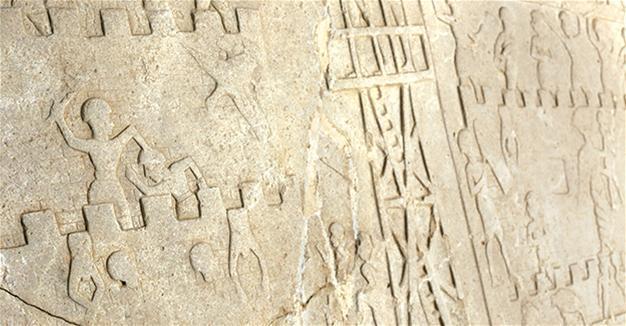Harput relief changes region’s history
ELAZIĞ – Anadolu Agency

AA photo
Examinations on a relief that was discovered by chance in the eastern province of Elazığ’s Harput district have revealed that the artwork dates back 4,000 years ago – indicating that the region’s history dates back a full 1,000 years more than originally believed.“Until now, the known history of Harput went back to the Urartians. However, with this relief, the history of Harput seems to have gone back about a thousand years,” said archaeologist Bülent Demir of the Elazığ Archaeology and Ethnography Museum.
İshak Yurter, the operator of an excavator, found the relief on May 3, 2016, while planting saplings in the Nevruz Forest and informed the museum directorate. The relief, which is 2.72 centimeter high and 2.25 meter wide, was found in five pieces.
Subsequent examinations and restoration work on the relief revealed that the artifact dated from 4,000 years ago. In this way, the history of Harput, which was previously thought to have begun in 1000 B.C. has been determined to be at least 1,000 older.
After the restoration work, the relief, which has been dubbed “Harput Relief,” was put in the museum on display.
Demir said traces of a settlement that developed in two phases before being destroyed in a big fire were also found during the excavation works in the region where the relief was found.
Demir said they believed the five-cornered artifact was affixed to a wall.
The main theme of the relief was the conquest of a castle, the archaeologist said, adding that scenes were shown bottom to top, depicting the spoils of war and naked slaves in front of the king.
“In the left panel, a fight in the castle and gruesome scenes are depicted,” Demir added.
The relief’s depiction of a wheeled wooden siege tower and a massive tire had not previously been seen in Anatolia and Mesopotamia, he said, while noting that Hittite cuneiforms had mentioned such a tower but that scholars had never encountered any visual proof.
The scene in the relief’s other panel depicted a goddess figure carrying an enemy soldier, adding that the relief highlighted the role of the goddess in winning the war by placing it in the center of the war panel.
“Figures similar to the goddess, which is the most important iconographic feature in the relief, are seen on the cylinder seals in the era of the king of Larsa in 1862 B.C. and the era of Hammurabi in 1779 B.C.,” he said.
Effects of Akkadian civilization
Demir said the scenes at the top of the relief depicted naked soldiers in front of the king. “In terms of stylistic and iconography, the relief has the powerful effects of the Akkadian school which was a powerful civilization in Mesopotamia between 2300 and 2150 B.C.”
The pieces found in the excavation area, where the relief was unearthed, were in better condition than similar ones found elsewhere, Demir said.
“These pieces date back to the beginning of 2000 B.C. The winged goddess and the tasseled headgear worn by the king on the relief was seen in the mid-Bronze age. This fact helps us to find out the period of the artifact,” he added.
Demir said the Sar Tamhari documents written by the Akkadian King Sargon and his grandson Naram Sin revealed that Anatolia was home to many independent kingdoms.
“Naram Sin says in these documents that he declared war against 17 kingdoms, including Kaniş King Zioani and Hatti King Harput. It is believed that the settlement unearthed in Harput was one of these kingdoms mentioned in the Sar Tamhani documents,” Demir said.
















